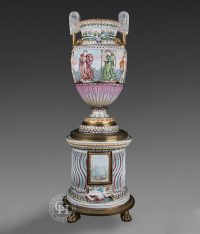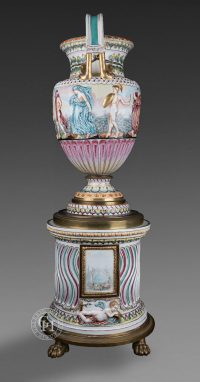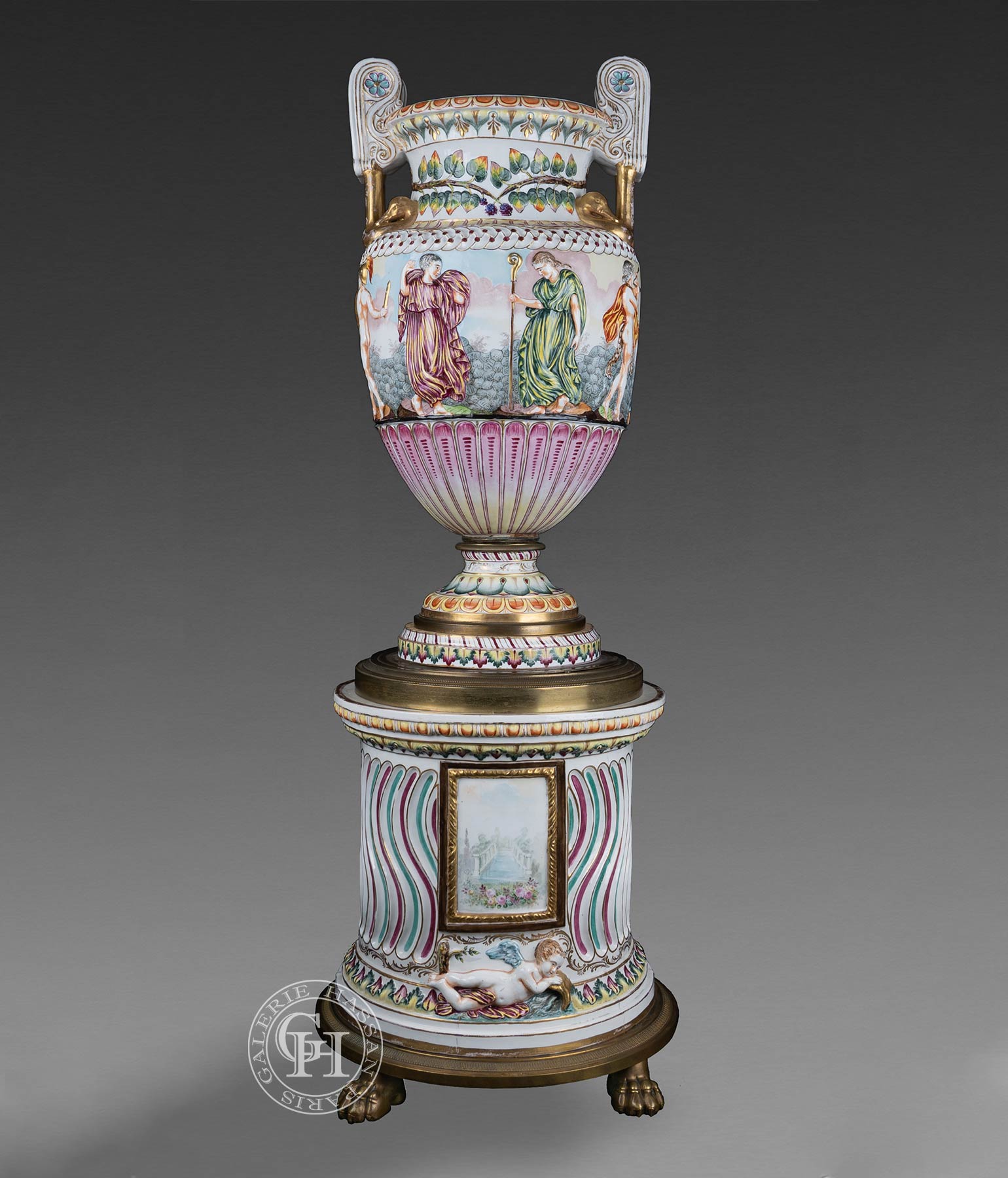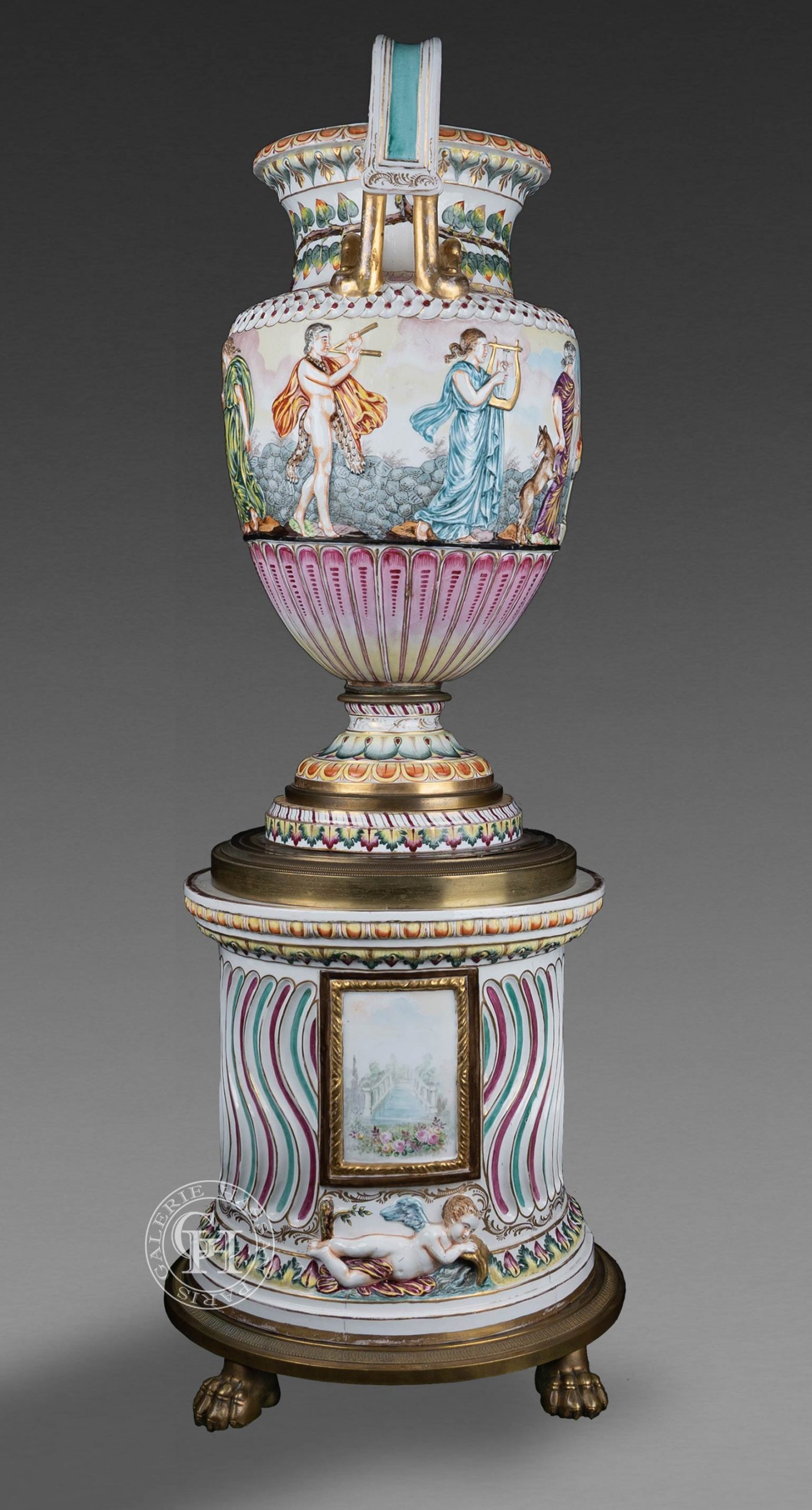Exquisite polychrome porcelain vase in the style of Sosibios produced by the Capodimonte manufacture
Exceptional vase in polychrome porcelain with gilding. Set on a pivoting piedouche in the shape of an Attic voluted krater. These vases were used in Antiquity, particularly among the Greeks, to mix wine and water.
The neck of the vase is decorated with ivy leaves and patterns of gadroons. The handles are of swan’s neck shape and are attached to the body of the vase.
Inspired by the historic Sosibios vase, this exceptional krater from the Italian Capodimonte manufacture features a rotating frieze with polychrome decorations in relief of a Bacchic procession presided over by Artemis and Hermes. They stand near an altar with a burning brazier. The goddess, with a quiver on her back, a bow in her left hand and holding a deer by its hoof, appears in her role as a huntress. Hermes is depicted wearing the chlamys, the traveller’s short cloak, and carrying the caduceus. The maenads, worshipers of Dionysus, dance to the sound of musical instruments and are accompanied by a dancing satyr, an armed warrior and Apollo, who plays the zither.
The Athenian sculptor Sosibios was one of the Greek artists active in Rome at the end of the Republic. Working in the “Neo-Attic” style, he used the decorative repertoire of Athenian workshops and was inspired by Greek models from different periods.
The vase is placed on a cylindrical base with relief motifs of a winged putti lying down and playing the flute. An area in the centre represents a garden scene. The base is supported by four gilt bronze claw feet in Empire style.
Italian work in polychrome porcelain from the end of the 19th century, around 1890-1900.
The shape and decorations of this vase come from the original marble vase in the permanent collection of the Louvre Museum in Paris (inventory number MR 987).
Part of the royal collection of Louis XIV from 1692, the krater joined the Louvre in 1797 as property confiscated during the Revolution. In the 19th century, its notoriety inspired many reproductions, such as the Sèvres biscuit factory in 1824. It also found a place in literature, inspiring John Keats (1795-1821) to write his Ode on a Grecian Urn.
Dimensions
Height: 130 cm – Diameter: 55 cm
Other suggestions
-
Agate vases
Agate vases3 February 2022









